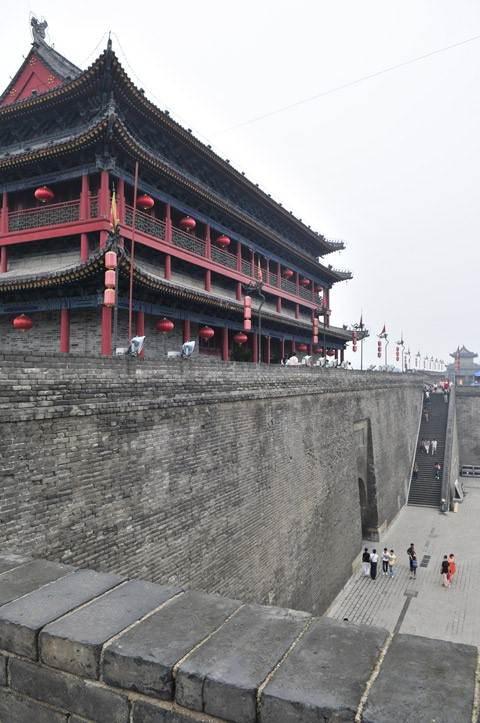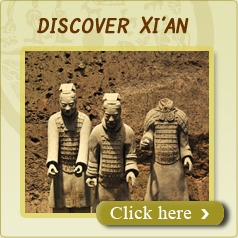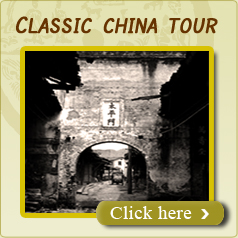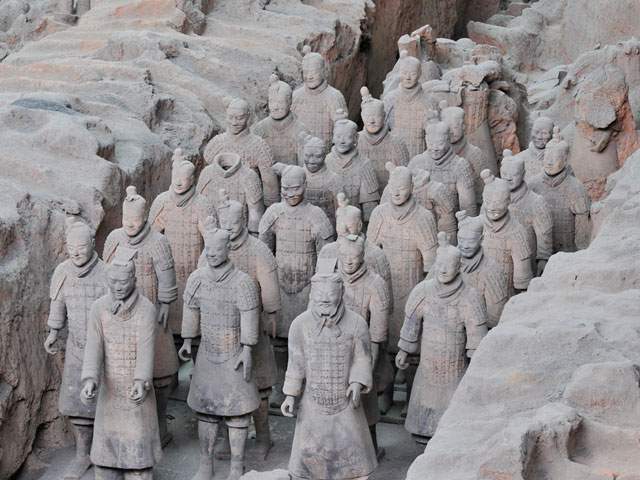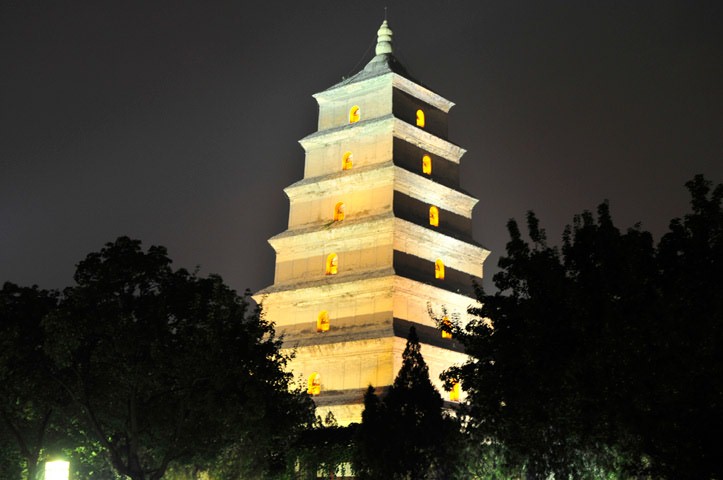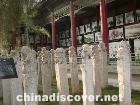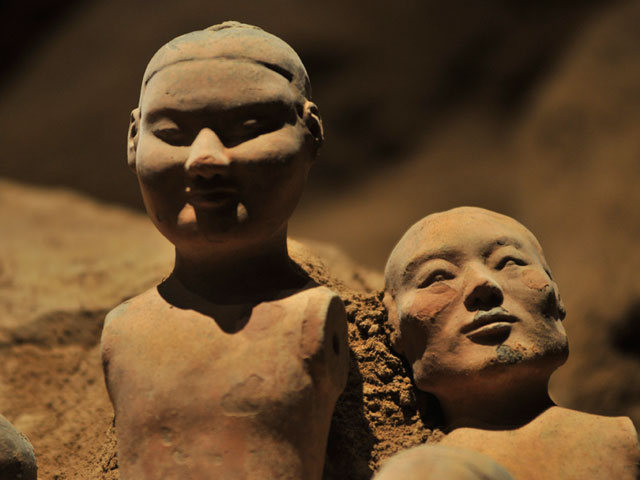Great Mosque
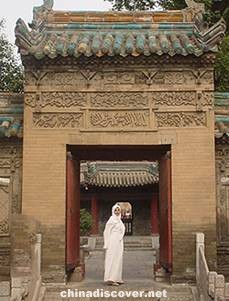
Overview
When you come to the Moslem residential area, you would find a large complex of the old and huge architecture - Great Mosque, which is still an active place of worship.
According to the historical records carved in the stone tablets which are still preserved in it, the mosque was set up in 742 AD for Muslim traders from Central Asia who settled jn Xi'an during the Tang Dynasty. So it has already had a history of over 1,250 years.
Know more
Inside the Great Mosque compound it is difficult ro tell that
the buildings are Islamic because it was built according to traditional Chinese architectural forms and many of the Islamic symbols are Sinicized. Unlike typical Chinese temples, which are built on a north-south axis, the mosque is built east-west with the prayer hall at the far west end in accordance to the Islamic regulation of facing Mecca for prayer. Although orginally built during the Tang dynasty, it has been extensively renovated with many of the present buidings hailing from the Qing dynasty. The mosque and the surrounding buildings take up an area of 13,000m2, though not all areas, such as the pray hall, are accessible to non-Muslims.
The mosque grounds are quiet, giving it an aura of religious sanctity and there's a large wooden gateway dating from the reign of the emperor of the Qing dynasty, Kangxi, who reigned from AD 1662 to 1723. The gateway features the calligraphy by Mi Fu, a famous Northern Song dynasty calligrapher and painter. The Introspection Minaret, which doesn't look like an Arabic minaret is where the cleric preaches to his congregation on an upraised platform.
Must see
Through the Five-Room Hall, in the middle of the second courtyard, there stand three connected stone mimorial gateways supported with the four pillars. On the top of the main gate, there is a title inscribed in Chinese calligraphy. It says:" The Court of The Heaven". There are stone carved fences around the gateways with the two passages on both sides. This stone complex was built in the Ming Dynasty. Behind it, two stone tables are erected there with the decorations of carved dragons. Both of them are carved with the inscriptions about the repairing of the mosque at the imperial orders in the Ming and Qing dynasties. At the backs of them are also inscribed with some big Chinese characters written respectively by the two famous calligraphers. These writings are regarded today as some of the best works in China.
The Imperial Hall in the third courtyard is the oldest building in the mosque. There is a piece of stone, called " The Moon Tablet", in it with and inscription in Arabic. It was written by a late famous imam, and was about the way of the calculation of the Moslem Calendar. Now this stone tables is a very valuable historical record about the development of Islamism in Shaanxi Province.
In the middle of the courtyard, " The Introspection Tower" serves as the minaret, which is the tallest building in the whole mosque for calling Moslems to pray. With two stories, three layers of eaves, and an octagonal roof, it stands high and solid so that it is very impressive. On the southern side of the minaret is the Official Reception Hall , in which the hand-written copy of " The Koran " of the Ming Dynasty are well preserved. To the east of the Official Reception Hall, there is a bath house for Moslems to wash before they pray.
Through the three connected doorways decorated with the fine brick carvings, that is the last courtyard. What visitors would view first is " The One God Pavilion". It is a very special building with a combination of the Chinese traditional archway and pavilion. The pavilion as the main body in the middle is shaped in a hexagon with its eaves upturned and its top protruded. While, both of its side parts are shaped in triangles and are upturned like archways. The whole architecture seems to a phoenix which is opening its wings and is about to fly. As it is very lifelike, that is why it is also named " The Phoenix Pavilion". Under the eave of it, a small board with the decoration of carved dragons is hung over there. Its inscriptions, " One God", were written by a high ranking official in the Ming Dynasty. There are some side houses on both sides of the pavilion too. The southern ones were build specially for receiving those officials and generals who came to announce the edicts from the emperors in the successive dynasties. Today in these houses, there are many historical and cultural relics of the Miming and Qing dynasties on display, such as a beautiful fishbone-inlaid screen made of the 12 pieces of boxwood, some old tables, chairs, porcelains, paintings and so on. In the northern houses, there is now preserved an old stone sundial and several stone tablets with the important inscriptions about the mosque of the Tang and other dynasties.
When you walk further and take the stairways to the big and wide platform, the lofty and magnificent hall for worship would appear in your sight. With the huge eaves and brackets, its roofs are all covered with the blue glazed rooftiles, while its ceilings are carved with over 600 classical scriptures, in which all the letters are shaped in the colourful decorative patterns of grass and flowers, Around the hall inside, all the pages of " The Koran" are carved in the 600 pieces of huge wooden boards, 30 of them are in Chinese, the others are in Arabic. They are really marvelous carvings of art, and are rarely seen in the other mosques of the world. The hall can hold a thousand believers to do their religious services at the same time.
The area surrounding the mosque is called Huifang and has a distinct Muslim atmosphere, with small tree lined lanes crowded with restaurants and shops that are alive with activity.
